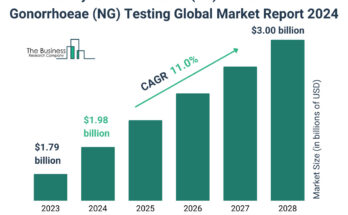[211 Pages Report] A new study by FMI reveals that the chemotherapy-induced myelosuppression treatment market is expected to grow at a subdued 3% y-o-y in 2019. Valued at nearly US$ 7 billion in 2018, gains are likely to be driven by a combination of multipronged factors, including,
- Development of natural product interventions for chemotherapy-induced side effects
- Growing implementation of radiation treatment in cancer treatment owing to the associated high success rate of chemotherapy
- Growing R&D investments in cancer research
The FMI study finds that ‘growth factor’ drugs continued to garner highest revenues in the chemotherapy-induced myelosuppression treatment market. In 2018, over 73% of the chemotherapy-induced myelosuppression treatment market revenues were consolidated in the growth factors. Gains were especially notable for granulocyte-colony stimulating factor or G-CSF, which accounted for over 60% of the global chemotherapy-induced myelosuppression treatment market revenues in 2018.
The FMI study reveals that erythropoietin-stimulating agents (ESA) also accounted for a significant market share, with revenues likely to grow at 2.8% in 2019. In April 2017, FDA announced the removal of risk evaluation and mitigation strategy (REMS) requirement for the use of ESA drugs in myelosuppression treatment. The ESAs used in the treatment of radiation-induced myelosuppression treatment are epoetin alfa and darbepoetin alfa. This has led healthcare professionals to engage in the practice of discussing benefits as well as risks of treatments that include ESAs before initiating the use.
Hematopoietic growth factors have transformed the practice of cancer treatment by allowing stimulation of production of specific cells. With this, use of thrombopoietin receptor agonists is expected to rise rapidly at the rate of 3.5% in 2019.
Injectable Drugs Present Higher Therapeutic Availability over Orals
The FMI study finds that injectable drugs accounted for over 97% of the chemotherapy-induced myelosuppression treatment market revenues in 2018. The status-quo will continue in the future, however, the oral route of administration is expected to garner increasing annual revenues and expected to grow at 4.8% in 2019 over 2018.
Increasing number of research validations related to the benefits of the oral route of administration can be attributed to the higher growth rate of the segment in the future. However, revenues from the injectable route of the administration continue to grow steadily on the back of their higher therapeutic availability over orally administered drugs.
To remain ahead of your competitors, request for a sample – https://www.futuremarketinsights.com/reports/sample/rep-gb-1364
Market Revenues Consolidated in Neutropenia Treatment
According to the study, chemotherapy-induced myelosuppression treatment market revenues heavily consolidated in the neutropenia treatment. In 2018, neutropenia indication accounted for over 62% of market revenues. As neutropenia is one of the most common side effects of chemotherapy wherein prolongation of the same can lead to life-threatening infections. Owing to the severity of the implications, chemotherapy-induced myelosuppression therapeutics are heavily used in the treatment of neutropenia.
Anemia and thrombocytopenia indications also utilize chemotherapy-induced myelosuppression treatment therapeutics. The study finds that revenues in the thrombocytopenia treatment will grow at 3.7% y-o-y in 2019.
Retail Pharmacies Most Prominent Sales Channel
The study opines that chemotherapy-induced myelosuppression treatment therapeutics sales remain higher through retail pharmacies. Suppliers of these therapeutics have extensive distribution network with international retail pharmacies. Due to this, retail pharmacies accounted for over 48% of the chemotherapy-induced myelosuppression treatment market revenues in 2018.
Owing to heavy integration of pharmacies in the hospitals, distribution of chemotherapy-induced myelosuppression treatment therapeutics through hospital pharmacies also account for a considerable share of the market revenues. The study finds that hospital pharmacies can be called the second largest distributor of chemotherapy-induced myelosuppression treatment therapeutics owing to their 45% of the market revenues.
US – The World’s Largest Chemotherapy-induced Myelosupression Treatment Market
FMI reveals that North America accounted for over 82% of the revenues in chemotherapy-induced myelosuppression treatment market in 2018. Presence of leading cancer therapeutics providers, significant R&D investments and established healthcare sector contribute to the bulk of market revenues. The U.S. remains the largest consumer of the chemotherapy-induced myelosuppression treatment market.
Market revenues in the APEJ region are likely to grow at higher rate owing to improving healthcare facility and growing penetration of advanced cancer care treatments. China, followed by India, accounts for the highest market revenues in APEJ owing to improving economic scenario and developing healthcare infrastructure.
The FMI report analyses chemotherapy-induced myelosuppression treatment market for the forecast period 2018-2028. As per the report, the chemotherapy-induced myelosuppression treatment market is estimated to grow at 3.2% CAGR through 2028.
Get a Tailored Made Report to Match Your requirements, Ask from Market Research Expert – https://www.futuremarketinsights.com/ask-question/rep-gb-1364
Key Segments of Chemotherapy-Induced Myelosuppression Treatment Industry SurveyChemotherapy-Induced Myelosuppression Treatment Market by Indication:
- Neutropenia
- Anaemia
- Thrombocytopenia
Chemotherapy-Induced Myelosuppression Treatment Market by Drug Class:
- Growth Factors
- Erythropoietin Stimulating Agents
- Thrombopoietic Agents
- Iron Supplements
- Others
Chemotherapy-Induced Myelosuppression Treatment Market by Route of Administration:
- Oral Chemotherapy-Induced Myelosuppression Treatment
- Injectable Chemotherapy-Induced Myelosuppression Treatment
Chemotherapy-Induced Myelosuppression Treatment Market by Distribution Channel:
- Hospitals Pharmacies
- Retail Pharmacies
- Online Pharmacies
- Drug Stores
Chemotherapy-Induced Myelosuppression Treatment Market by Region:
- North America Chemotherapy-Induced Myelosuppression Treatment Market
- Latin America Chemotherapy-Induced Myelosuppression Treatment Market
- Europe Chemotherapy-Induced Myelosuppression Treatment Market
- East Asia Chemotherapy-Induced Myelosuppression Treatment Market
- South Asia & Pacific Chemotherapy-Induced Myelosuppression Treatment Market
- Middle East & Africa (MEA) Chemotherapy-Induced Myelosuppression Treatment Market
For in-depth insights, Download a PDF Brochure – https://www.futuremarketinsights.com/reports/brochure/rep-gb-1364
About Future Market Insights (FMI)
Future Market Insights (FMI) is a leading provider of market intelligence and consulting services, serving clients in over 150 countries. FMI is headquartered in Dubai, and has delivery centers in the UK, U.S. and India. FMI’s latest market research reports and industry analysis help businesses navigate challenges and make critical decisions with confidence and clarity amidst breakneck competition. Our customized and syndicated market research reports deliver actionable insights that drive sustainable growth. A team of expert-led analysts at FMI continuously tracks emerging trends and events in a broad range of industries to ensure that our clients prepare for the evolving needs of their consumers.
Contact:
Future Market Insights,
1602-6 Jumeirah Bay X2 Tower,
Plot No: JLT-PH2-X2A,
Jumeirah Lakes Towers, Dubai,
United Arab Emirates
For Sales Enquiries: [email protected]
For Media Enquiries: [email protected]
Website: https://www.futuremarketinsights.com/



